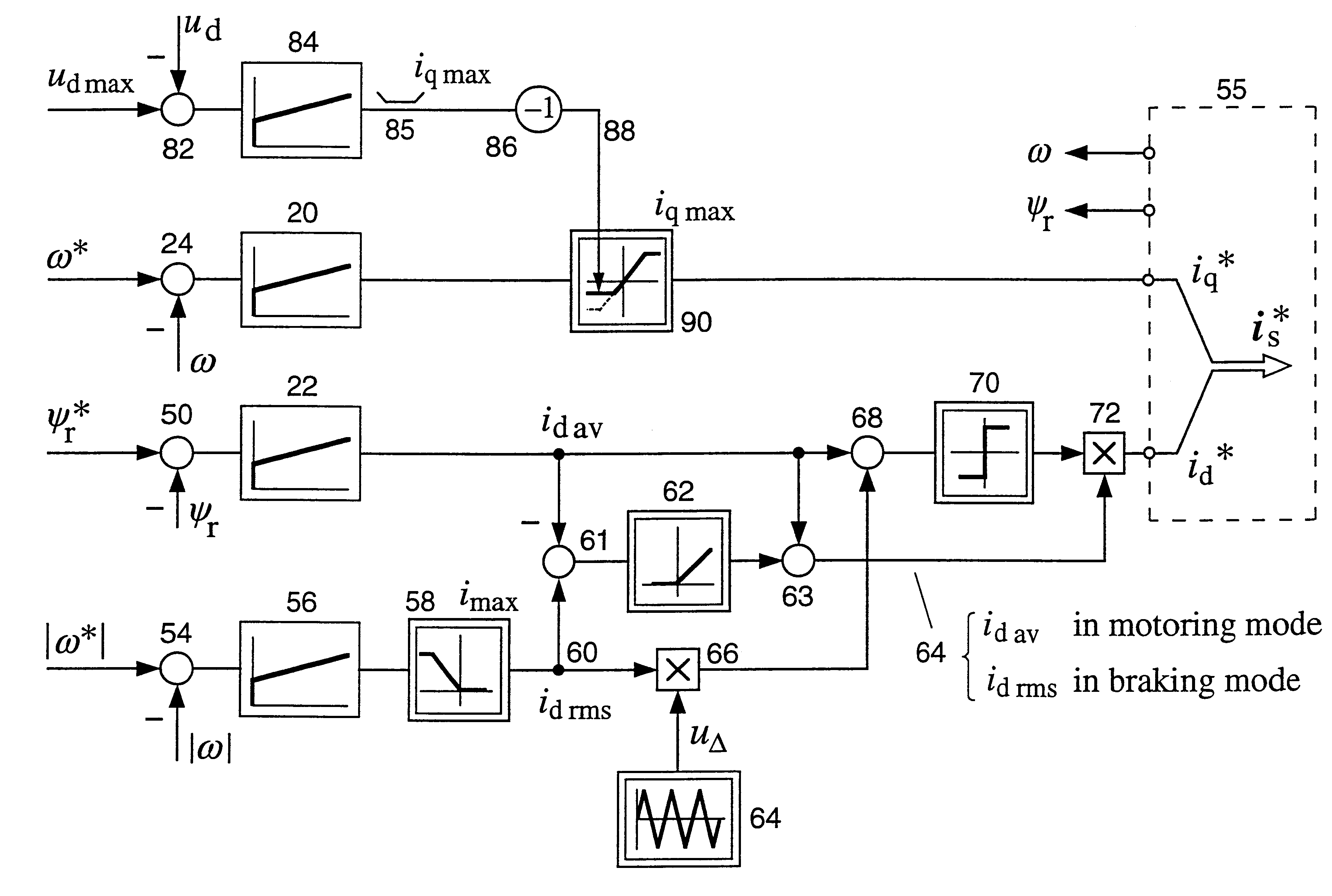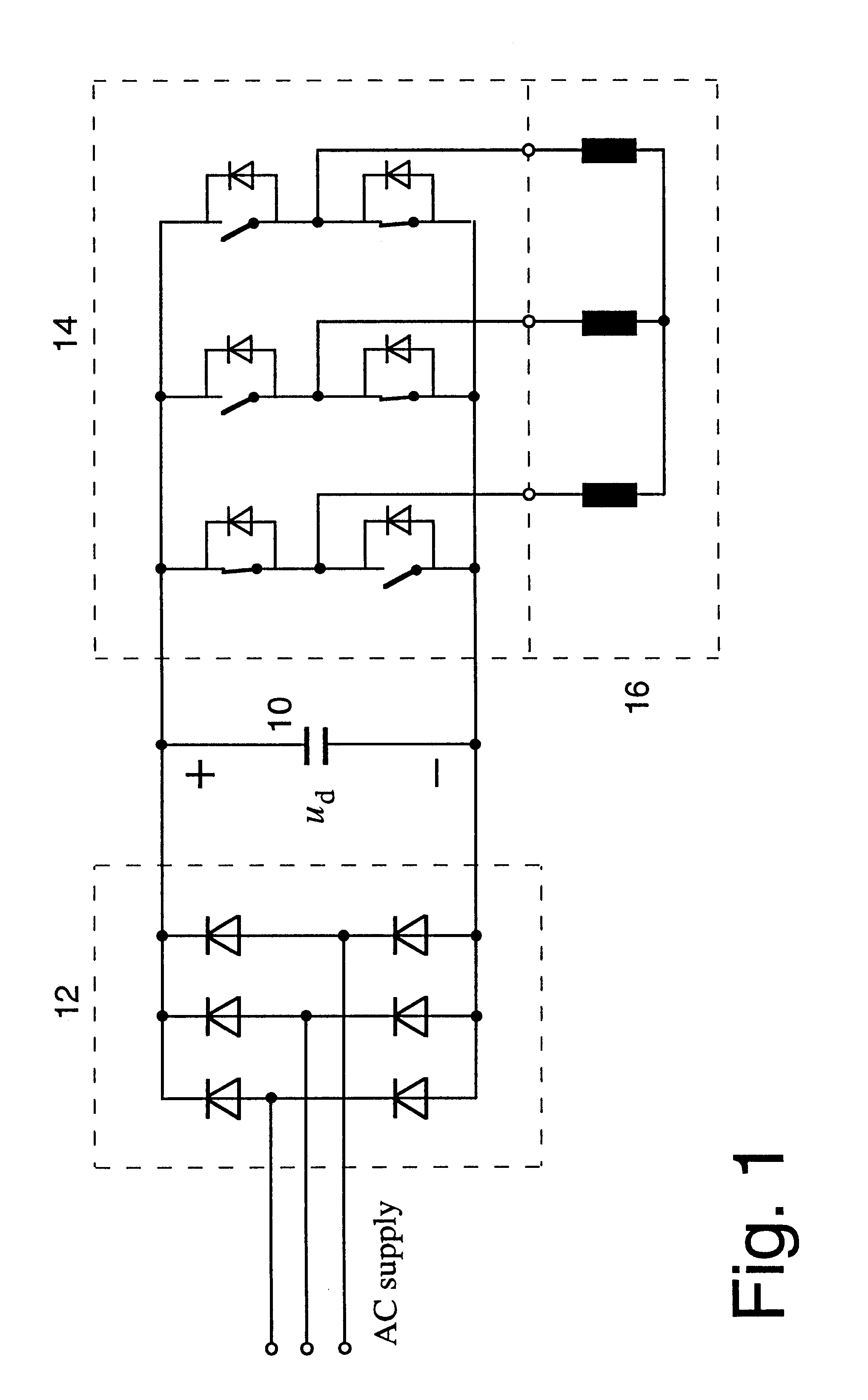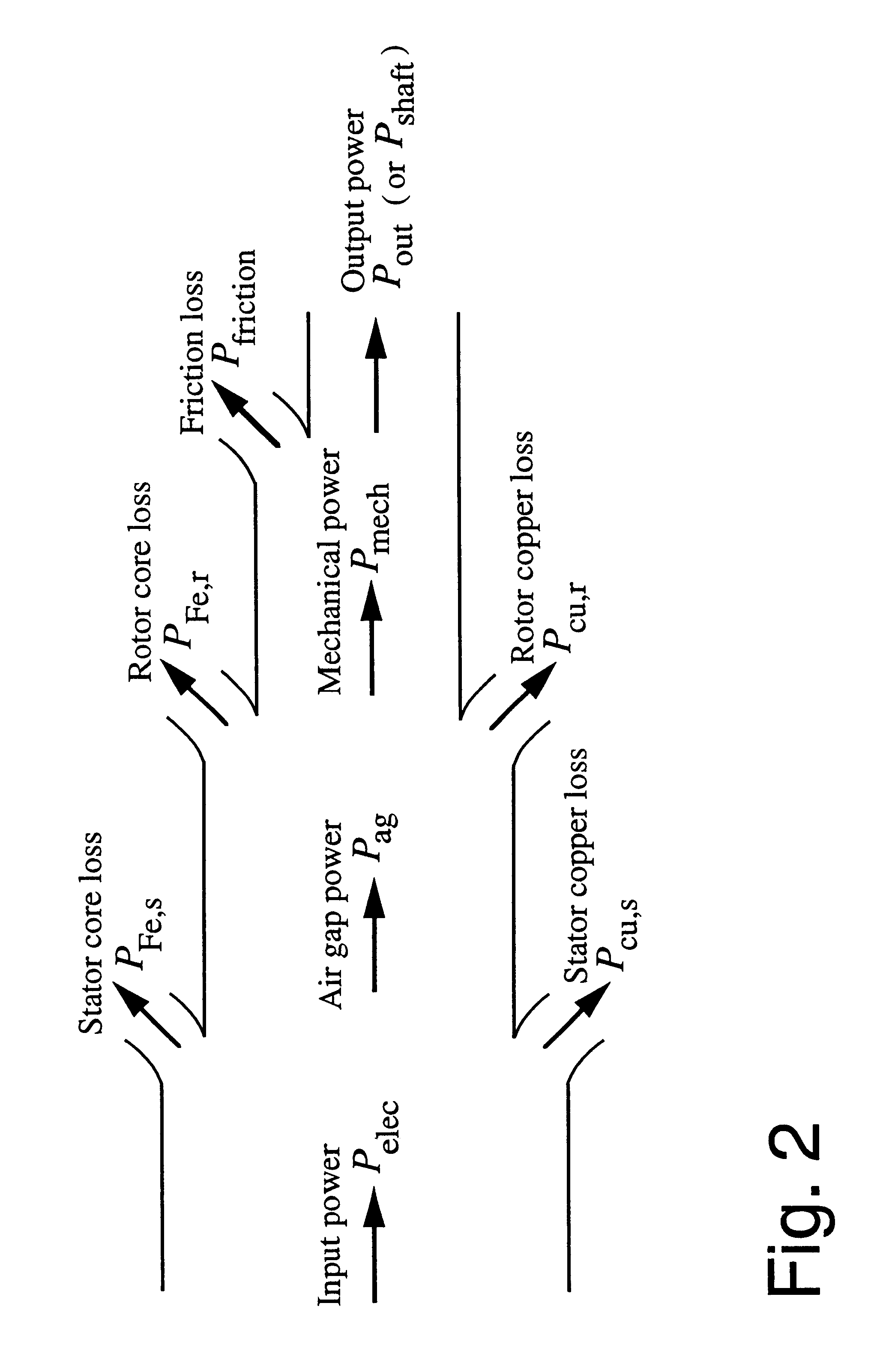Method of braking a vector controlled induction machine, control device for carrying out the method and storage medium
a vector controlled induction machine and control device technology, applied in the direction of electronic commutation motor control, control system, electric generator control, etc., can solve the problems of increasing the cost of ac drive, reducing reliability, and the diode bridge not being able to re-regenerate power to the ac supply, so as to achieve maximum braking ability, improve field oriented control, and high dynamic performance
- Summary
- Abstract
- Description
- Claims
- Application Information
AI Technical Summary
Benefits of technology
Problems solved by technology
Method used
Image
Examples
Embodiment Construction
To ensure the required dynamic performance, the machine is operated at field oriented control. The electromagnetic torque
T.sub.e =k.sub.r.psi..sub.r i.sub.q (5)
is then proportional to the rotor flux linkage .psi..sub.r and the q-current i.sub.q. k.sub.r =l.sub.h / l.sub.r is the coupling factor of the rotor, l.sub.h being the mutual inductance between stator and rotor windings and l.sub.r the inductance of the rotor winding. The rotor flux linkage .psi..sub.r is defined by the differential equation ##EQU1##
where .tau..sub.r =l.sub.r / r.sub.r is the rotor time constant. Equations (5) and (6) are visualized in the signal flow graph shown in FIG. 5 (see for instance J. Holtz: "Methods for Speed Sensorless Control of AC Drives," in Sensorless Control of AC Motors, edited by K. Rajashekara, IEEE Press Book, 1996).
To maximize the stator copper losses given by equation (2), the root-mean-square (rms) value of the stator current ##EQU2##
should be maximum. There are, however, constraints on b...
PUM
 Login to View More
Login to View More Abstract
Description
Claims
Application Information
 Login to View More
Login to View More - R&D
- Intellectual Property
- Life Sciences
- Materials
- Tech Scout
- Unparalleled Data Quality
- Higher Quality Content
- 60% Fewer Hallucinations
Browse by: Latest US Patents, China's latest patents, Technical Efficacy Thesaurus, Application Domain, Technology Topic, Popular Technical Reports.
© 2025 PatSnap. All rights reserved.Legal|Privacy policy|Modern Slavery Act Transparency Statement|Sitemap|About US| Contact US: help@patsnap.com



